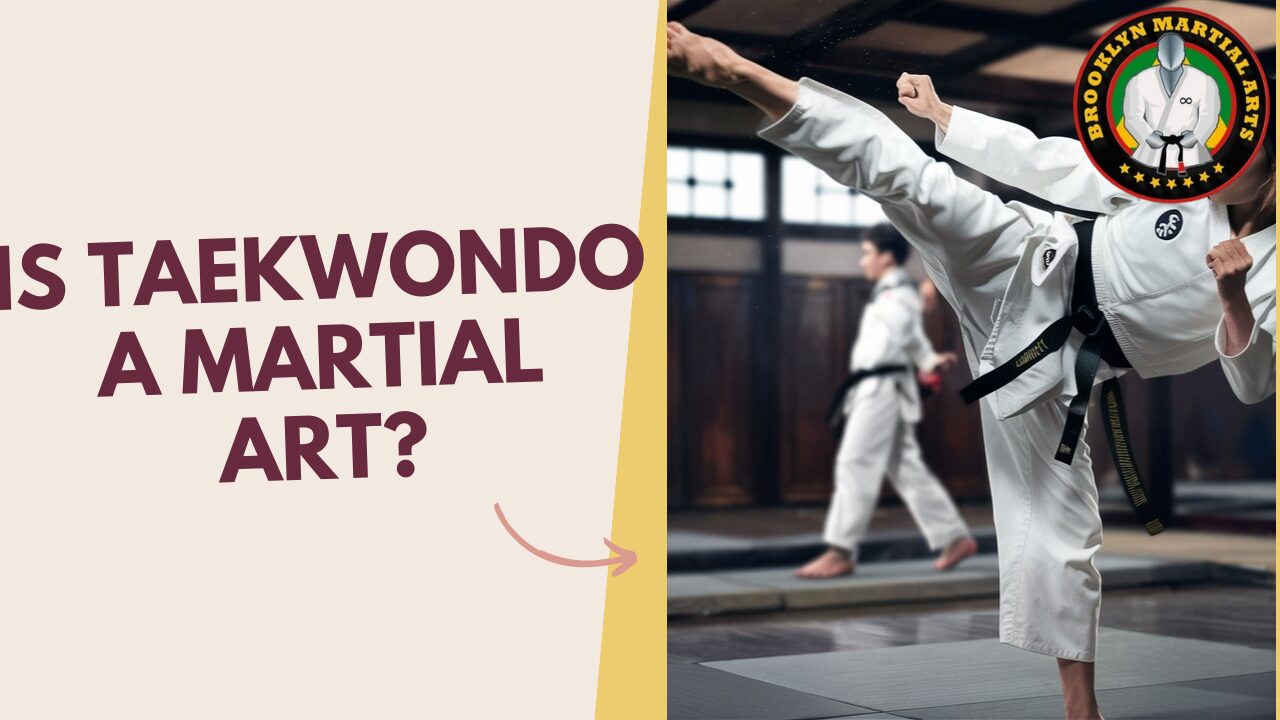Indeed, Taekwondo is a traditional Korean martial art rooted in self-defense practices. Its evolution blends Korean combat and Chinese martial arts influences. Taekwondo emphasizes mental discipline, focusing on respect and self-control. Physical fitness is paramount, stressing strength, flexibility, agility, and endurance. Mastery of striking, blocking, and kicking techniques is integral, with techniques like front kick, roundhouse kick, side kick, and spinning hook kick being vital. Taekwondo’s philosophy centers on the balance between body and mind, cultivating respect, humility, and integrity. It’s recognized for combining traditional martial art elements with competitive sport aspects.
Key Takeaways
- Taekwondo is a traditional Korean martial art.
- It emphasizes combat effectiveness and self-defense techniques.
- Practicing Taekwondo hones mental discipline and physical fitness.
- The Black belt ranking system signifies skill and experience levels.
- Taekwondo blends martial art traditions with competitive sport elements.
Origin of Taekwondo
Taekwondo, a traditional Korean martial art, traces its origins back to ancient practices of self-defense and physical conditioning developed over centuries in Korea. The rich tapestry of Korean history has woven a deep connection between Taekwondo and the cultural heritage of the Korean people. This martial art’s evolution can be traced to the Three Kingdoms period, where it was influenced by various forms of Korean combat and Chinese martial arts.
One of the hallmark features of Taekwondo is its Black belt ranking system, which signifies the practitioner’s level of skill, knowledge, and experience. The Black belt ranking system, popularized in the early 20th century, provides a structured approach to progression within the art form. It symbolizes the journey from a novice practitioner to a proficient martial artist, reflecting the dedication and discipline required to advance in Taekwondo. The ranking system serves as a roadmap for students, guiding them through the various stages of learning and mastery within this ancient Korean martial art.
Principles of Taekwondo
Derived from centuries-old traditions and philosophies, the principles of Taekwondo encompass a set of core values that underpin the practice and philosophy of this martial art. Mental discipline is a fundamental principle in Taekwondo, emphasizing the importance of focus, respect, and self-control. Practitioners are encouraged to cultivate a strong mind through rigorous training, meditation, and ethical conduct. This mental discipline not only enhances performance in training and competitions but also extends to daily life, fostering a sense of responsibility and integrity.
Physical fitness is another key principle in Taekwondo. The art places a strong emphasis on developing strength, flexibility, agility, and endurance. Training sessions involve a combination of aerobic exercise, strength training, and stretching routines to improve overall physical conditioning. By prioritizing physical fitness, practitioners not only enhance their martial arts skills but also promote a healthy lifestyle outside the dojang. Embracing these principles of mental discipline and physical fitness is essential for individuals seeking to excel in Taekwondo and embody its holistic approach to personal development.
Techniques in Taekwondo
In the practice of Taekwondo, mastering a diverse array of striking, blocking, and kicking techniques is essential for developing proficiency in this martial art. Kicking techniques are a hallmark of Taekwondo, with practitioners utilizing various kicks such as front kick, roundhouse kick, side kick, and spinning hook kick. These kicks require precision, flexibility, and control to execute effectively. Additionally, Taekwondo emphasizes the use of fast and powerful kicks to overwhelm opponents in both offensive and defensive situations.
Sparring drills play a crucial role in honing Taekwondo techniques. These drills involve simulated combat scenarios where practitioners practice their kicks, blocks, and strikes against a partner. Through sparring drills, Taekwondo students learn to apply their techniques in a dynamic and responsive manner, improving their timing, accuracy, and adaptability in a controlled setting. Furthermore, sparring helps practitioners develop their footwork, agility, and strategic thinking, essential components of effective Taekwondo practice.
Philosophy Behind Taekwondo
The underlying philosophy of Taekwondo embodies a fusion of physical discipline with mental fortitude, emphasizing the harmonious balance between body and mind in martial practice. Rooted in Eastern influences, Taekwondo places significant importance on the development of self-discipline and self-control. Practitioners are encouraged to cultivate a strong sense of respect, humility, and integrity, reflecting the traditional values of martial arts.
Eastern influences, particularly from Korean and Japanese martial arts traditions, have shaped the philosophical principles of Taekwondo. These influences underscore the significance of achieving inner peace and harmony through rigorous physical training and mental focus. The practice of forms or patterns, known as ‘poomsae’ in Taekwondo, serves as a means to hone concentration, discipline, and control, embodying the essence of the martial art.
Moreover, the philosophy behind Taekwondo extends beyond physical techniques to instill valuable life skills. The self-discipline benefits gained from training in Taekwondo empower individuals to overcome challenges, foster resilience, and promote personal growth both on and off the mat.
Taekwondo as a Martial Art Vs. Sport
Taekwondo distinguishes itself as a discipline that blends the traditional aspects of a martial art with the competitive nature of a sport. This unique combination sets Taekwondo apart from other martial arts, emphasizing combat effectiveness and self-defense techniques while also showcasing athleticism and competitiveness in organized competitions.
In terms of combat effectiveness, Taekwondo focuses on striking techniques using the hands and feet, making it a practical martial art for self-defense situations. The training in Taekwondo instills discipline, mental focus, and physical conditioning, all essential elements in preparing individuals for real-life combat scenarios.
On the other hand, as a sport, Taekwondo offers practitioners the opportunity to test their skills against opponents in a controlled environment. Competitive Taekwondo involves sparring matches where participants demonstrate their speed, power, and technique while adhering to strict rules and regulations.
Frequently Asked Questions
Can Children Participate in Taekwondo Classes?
Children can participate in Taekwondo classes with parental involvement. These classes focus on skill development and offer progress tracking through belt promotions. It provides a structured environment for children to learn discipline, respect, and self-defense techniques.
Are There Different Styles or Variations of Taekwondo?
Taekwondo features various styles and variations that encompass unique sparring techniques, belt ranking systems, and self-defense methods. These styles are influenced by the cultural origins of Taekwondo, showcasing a rich history of traditional martial arts practices.
How Long Does It Typically Take to Earn a Black Belt in Taekwondo?
The black belt journey in Taekwondo is a testament to dedication and perseverance. Typically, it takes around 3-5 years for a practitioner to earn a black belt. Consistent training, mastery of techniques, and mental fortitude are essential.
Is There a Minimum Age Requirement to Start Learning Taekwondo?
Parental involvement is crucial in determining a child’s physical readiness and mental discipline to start learning Taekwondo. Progression milestones are set to ensure age-appropriate development. While there may be no strict minimum age, consultation with instructors is advised.
Are There Any Health Benefits Associated With Practicing Taekwondo?
Practicing Taekwondo offers numerous health benefits. It enhances mental clarity through discipline and focus, improves physical fitness with rigorous training, provides stress relief by promoting mindfulness, and equips individuals with self-defense skills, fostering overall well-being and confidence.
Conclusion
In conclusion, Taekwondo is a traditional Korean martial art that emphasizes discipline, self-defense, and physical fitness. With its origins dating back to ancient times, Taekwondo has evolved into a popular sport practiced worldwide.
The techniques and principles of Taekwondo are rooted in its philosophical foundations, making it both a martial art and a competitive sport. Its focus on mental and physical discipline sets it apart as a unique form of self-defense and personal development.

